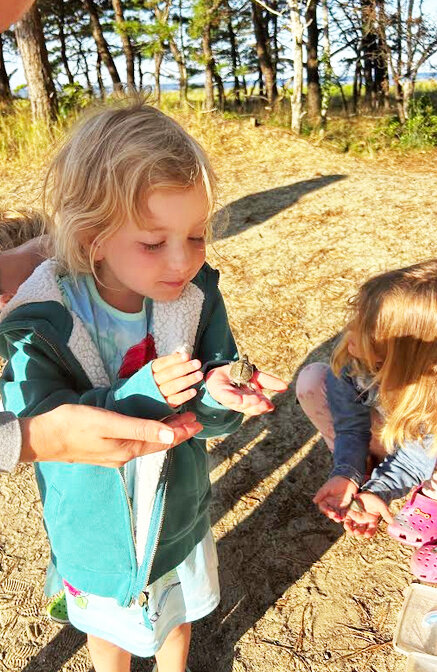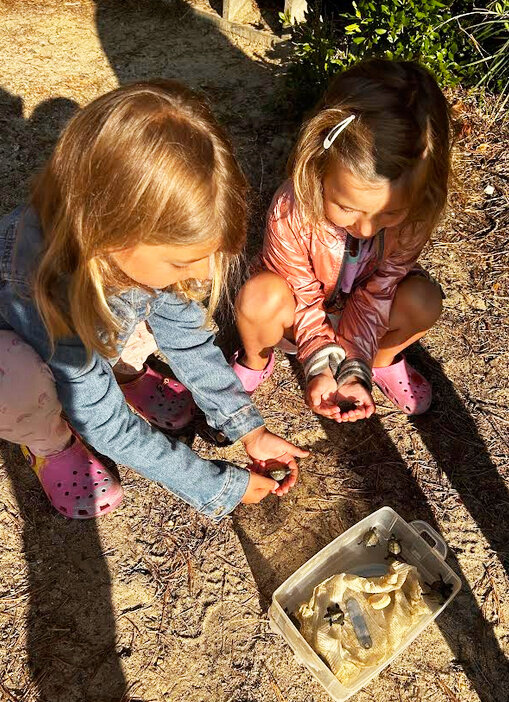‘Watch out for the turtles, Grandma’
The diamondback terrapins find a new home with the help of four granddaughters
The PVD Fest this past weekend creates a way for Rhode Islanders to connect to each other – including the lighting of the full WaterFire and the national tour of “Funny Girl” at PPAC, with its signature song lyrics: “People who need people are the luckiest people in the world.”
No economic development task force could have predicted how the launch of WaterFire in 1996, 27 years ago, could have spawned the creative capital [pun intended] to showcase the regeneration of an artistic community and a city landscape. What was needed was enough volunteers to lend enough hands to keep the act of creation a burning emblem of a city being reborn.
WELLFLEET, Mass. – We are the home to the most northerly population of the Diamondback Terrapins. And it’s the only turtle in North America that makes its home where salt water from the ocean mixes with fresh water.
Apparently during the 19th century, these turtles were a culinary delicacy, almost forcing their extinction, but the turtles rebounded after the decline in popularity.
But in our house, we’ve known about the Diamondbacks for a while as each June, we start seeing turtles all over the road as well as in the sandy parts of our yard. Spending nearly half of their lives in a narrow strip of salt marsh that connects the ocean to the mainland, the females come to land to lay their eggs in sandy patches above the high tide mark.
My granddaughters have befriended the “Turtle Lady” Barbara, a volunteer from the Audubon Sanctuary, located about 3 miles from our home.
If the girls are visiting in June, they even get to place calls to Barbara to report a turtle who’s full of eggs and who needs to be redirected towards a sandy spot. Interesting to note that these pregnant turtles, once their eggs are out, take off towards the water, never to return.
A few years ago, the girls accompanied Barbara one morning and participated in the construction of the protective mesh that keeps predators like foxes and coyotes away from the eggs. Barbara has taught them how to hold the turtles as well as how to feel if they have eggs.
Most days in mid to late June, there are turtles on our road where there is also a fair amount of traffic compared to the off-season. As soon as we’re in the car, the younger granddaughters always warn me: “Watch out for the turtles, Grandma.” Most days in late June, we stop for a turtle in the road and the girls pick them up, feel for eggs, and then place them in a safer location.
After about 70 days of incubation, the eggs hatch. Barbara and a college intern make daily rounds in the marsh and beach in front of our house, looking for the eggs. Even with protective traps, the foxes still manage to get the eggs, which is part of the reason that the Diamondback Terrapin is officially listed as “threatened” in the state of Massachusetts.
There are several reasons for this but increasing numbers of humans on the Cape has also resulted in an explosion in the number of foxes, raccoons and skunks. These are the primary predators of terrain eggs and hatchlings.
Last month Peter and I were lucky enough to have almost a week with our “girl gang” as we affectionately call the four youngest of our grandkids. They range in age from 2 to 8.
On the eve of all four girls’ departure, I received a text from Barbara, who said that she had several one-day-old baby terrapins who needed to be released in to the marsh, and that if I had any grandkids visiting, we should meet her at 7:30 the next morning.
At exactly 7:30 the following morning, we found Barbara at the meeting spot. She was holding a small plastic box. She gently opened the box to show the girls the hatchlings. Barbara also had the shell of one of the hatchlings so she could show the girls how the eggs looked and felt, encouraging them to feel it.
Our girl gang is a delightfully noisy, talkative, loud and funny gang. Sometimes they break out in hysterical laughter, sometimes there are disputes and tears and often things can be delightfully chaotic.
But that early morning, all four of them looked in absolute wonderment at these babies. The girls were incredibly silent and moved by the presence of these miniature terrapins. Each of them gently held the babies except the two-year-old.who wasn’t quite sure of this activity. They held the babies in the palms of their little hands for several minutes, in absolute silence and awe. After several minutes they had questions for Barbara, hanging on her every word.
And then, just like that, Barbara said “OK girls, follow me. We’re going down a small path in the marsh where we will find a good spot to release the babies.” And off they went.
Each girl picked up one baby at a time and ever so carefully and gently, set the hatchling into the marshy grass. They watched intently as the hatchlings started moving into the marshy area where they’ll bury themselves and remain all year.
It started with a small act of kindness – an invitation to see the babies and release them in the marsh. But the absolute joy on these girls’ faces, as they held the baby turtles for the first time, followed by the satisfaction of gently releasing them into the marsh grasses, was a lovely testament to the power of hands on experiences.
There’s so much wrong in the world right now. Divisiveness, anger, fear, dismay – it consumes us. There are so many threats to what we can teach children, what books they can read, and what activities they can engage in. It’s disheartening and enraging.
Yet for 30 minutes that lovely morning in late August, none of this was on my mind. Instead my granddaughters, daughter-in-law and I participated in one of nature’s annual events that I know the girls will insist on becoming a tradition.
Next June we will begin the turtle protection and egg laying process once again. I’m quite sure the “awe” factor will still feature prominently and the two-year-old will be ready to hold the one-day-old Terrapin in her little hand.
Toby Simon is a frequent contributor to ConvergenceRI.







